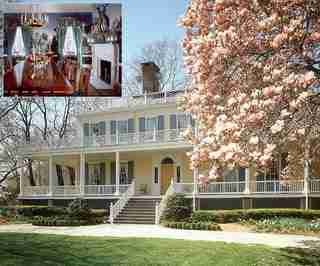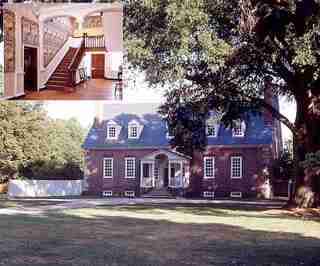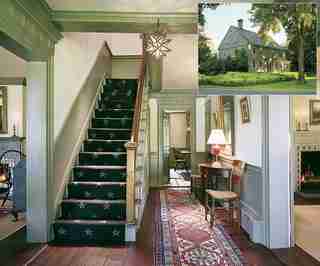June 12,2022
Early American Homes
by David Stewart

dam-images-architects-2009-02-early_american_homes-01_early_american_homes.jpg
“It’s remarkable that it’s one of the oldest surviving wood structures in Manhattan,” Mayor Michael Bloomberg says of Gracie Mansion, above. He spearheaded the renewal of the 1799 building, which has housed nine mayors, so it could play a more public role in the city. Inset: A French chandelier, from H.M. Luther Antiques, was added to the dining room to complement the Zuber Les Jardins de Paris wallpaper, which was installed during the 1984 restoration by Albert Hadley. (November 2003)

dam-images-architects-2009-02-early_american_homes-02_early_american_homes.jpg
Gunston Hall Plantation, in Virginia, was built by patriot George Mason in 1759. Inset: A period reproduction paper, based on one at the Victoria & Albert Museum, lines the center hall’s walls. (November 2003)

dam-images-architects-2009-02-early_american_homes-03_early_american_homes.jpg
A late-18th-century house and barn complex on a two-acre site in Roxbury, Connecticut, was restored by architects Charles M. Haver and Stewart R. Skolnick. Near the entrance to the center hall are a card table, circa 1790, a whale-oil lamp, circa 1850 and a circa 1820 gilt mirror. Saxony Carpet stair runner. (June 2005)
dam-images-architects-2009-02-early_american_homes-04_early_american_homes.jpg
Eden Rafshoon, a retired interior designer, and her husband, Gerald, a film and television producer, settled in the Georgetown district of Washington D.C. Originally from Atlanta, Eden was determined to find a home that felt like her hometown, and finally, after 13 years of searching, they found what they were looking for: a Federal-style house built in 1810 with a wonderfully historic past. The house, known as the Henry Foxhall house, was originally built as a wedding gift from cannon-foundry magnate Henry Foxhall to his daughter and often played host to the likes of Thomas Jefferson and Andrew Jackson. Inset: The library. Eden sat in the antique child’s chair as a girl. (January 2004)
dam-images-architects-2009-02-early_american_homes-05_early_american_homes.jpg
The residence of Colonel Philip Lightfoot, built in 1730, is marked by Flemish bond work and a string-course in molded brick. Since 1962 the house has been reserved for VIPs and special guests of Colonial Williamsburg, Virginia, such as U.S. presidents and foreign dignitaries. Inset: In the Lightfoot House’s living room, a circa 1751 tea service sits on an 18th-century Chinese black-lacquered low table. (June 2001)
dam-images-architects-2009-02-early_american_homes-06_early_american_homes.jpg
Philip Barraud, a physician, bought a house on Williamsburg’s Francis Street in 1786. (June 2001)
dam-images-architects-2009-02-early_american_homes-07_early_american_homes.jpg
The reconstructed 1777 David Morton House in Williamsburg. Inset: The floor cloth in the entrance hall is adorned with Masonic insignia. The drapery fabric is from Brunschwig & Figs. (June 2001)
dam-images-architects-2009-02-early_american_homes-08_early_american_homes.jpg
A broad path through a formal garden leads to the ballroom wing of the Williamsburg Governor’s Palace, completed in 1722 and occupied by a series of Virginia’s royal governors. (June 2001)
dam-images-architects-2009-02-early_american_homes-09_early_american_homes.jpg
Thomas Jefferson’s Charlottesville, Virginia, house was inspired by Palladian villas. A self-taught architect, Jefferson began constructing the house in 1769, at the age of 26, and spent the next 40 years renovating it.






